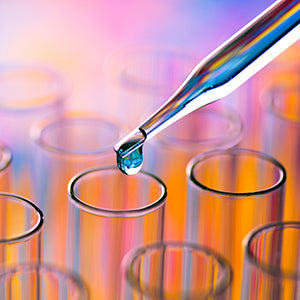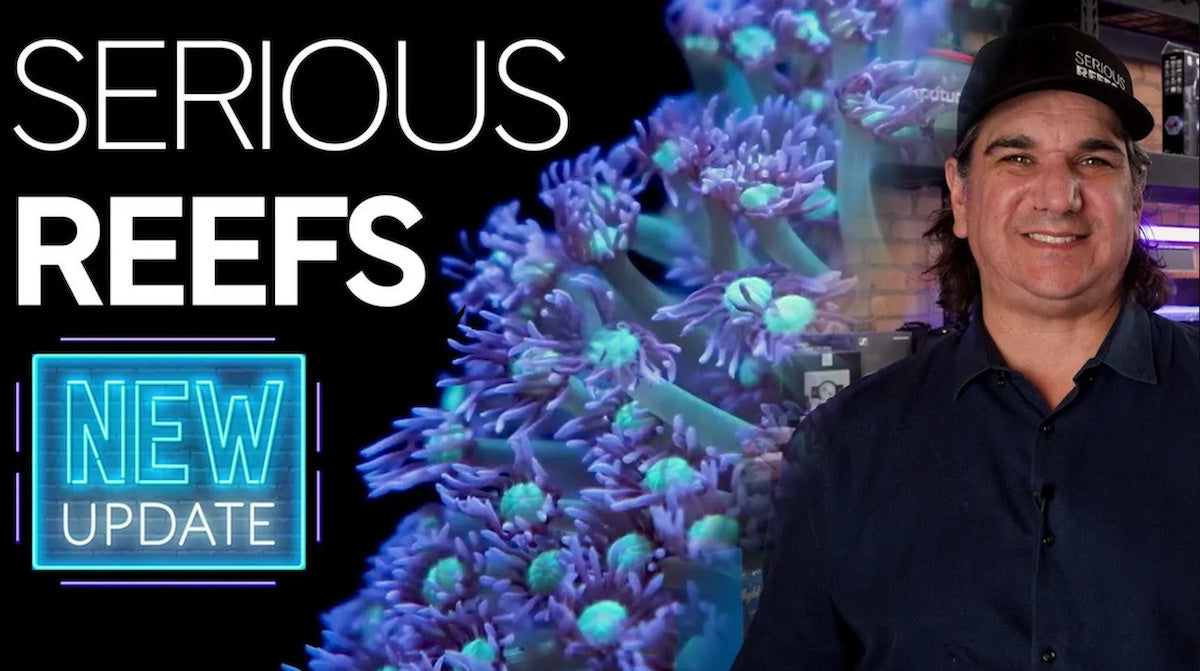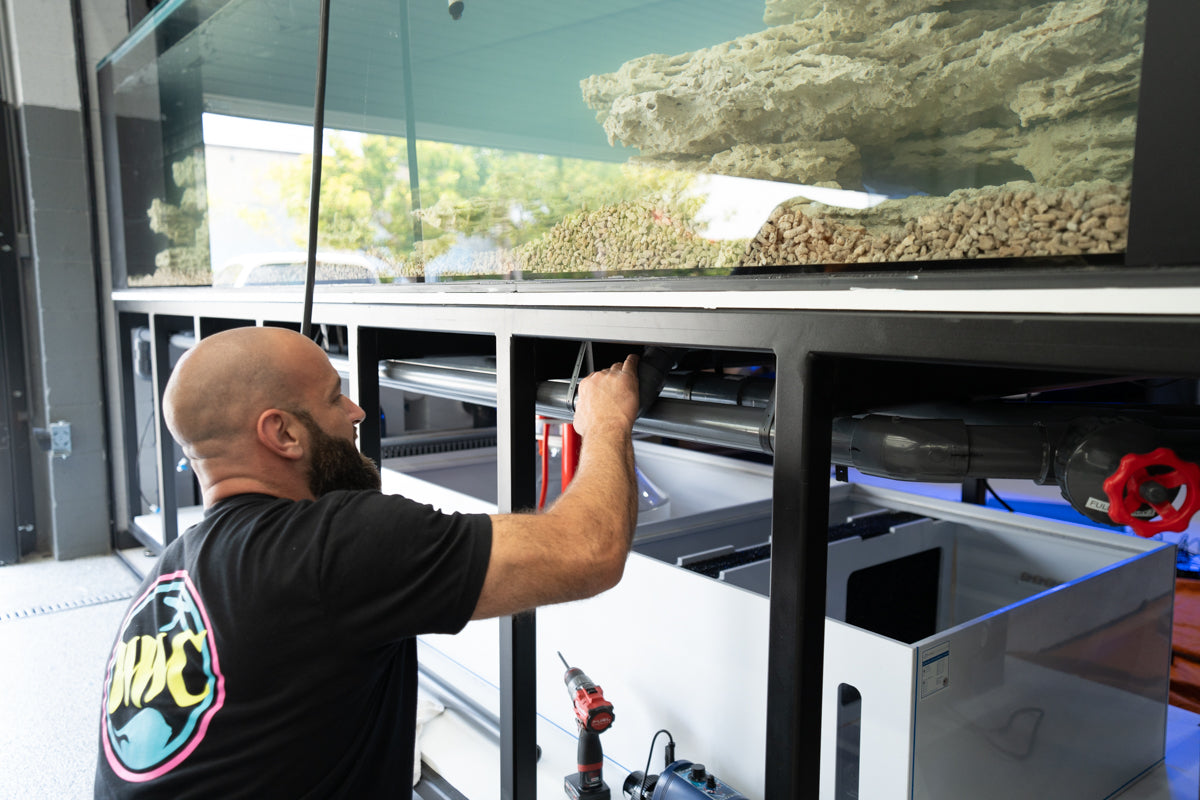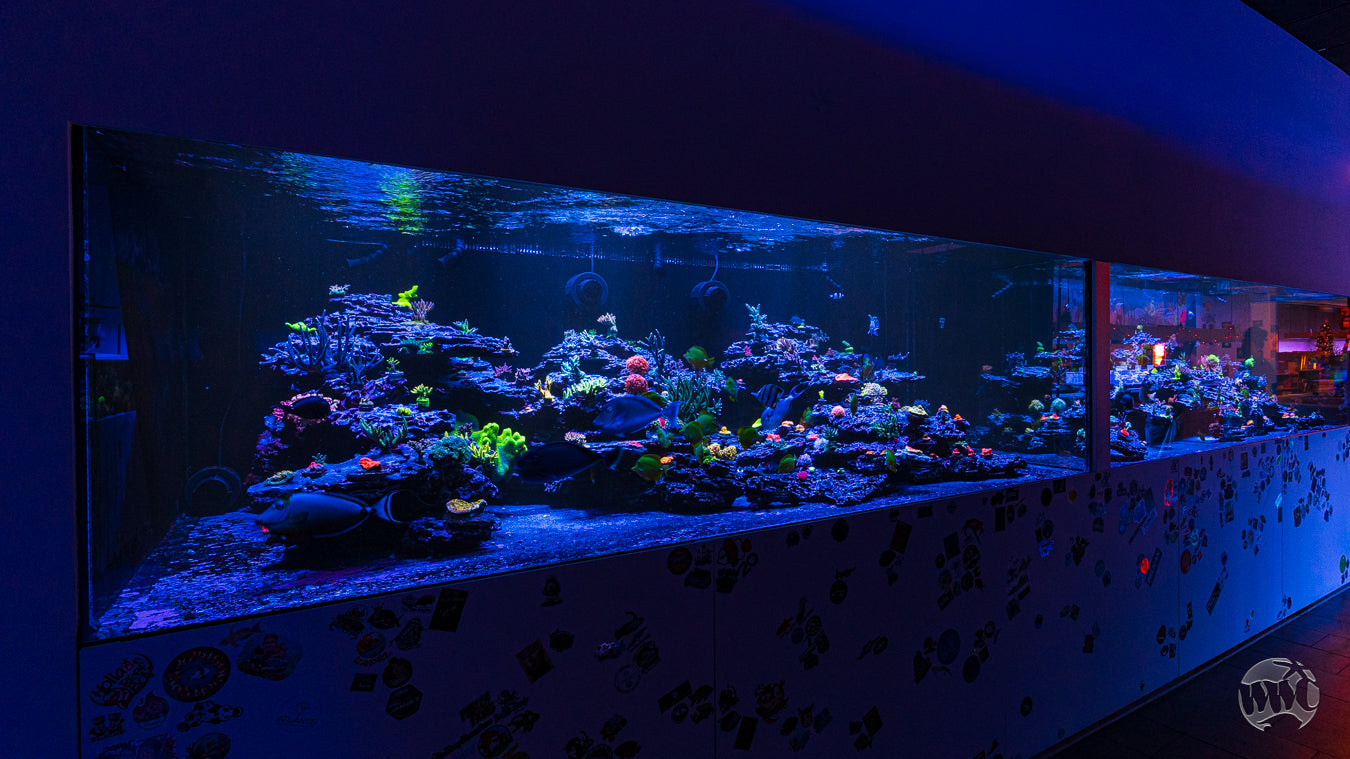
One thing you always hear people talking about, especially when it comes to troubleshooting issues, is water testing. If you were to survey 10 random aquarists and ask them how frequently they test their water, you are likely to get a variety of responses from only testing when something seems wrong, to a regularly tested and monitored tank. Although each tank is different from the next, regular water testing is one thing that should stay the same. Regular water testing is important for the health of both your fish and your corals. Unless something is blatantly wrong with a tank, the water of a healthy tank will look very similar to the water of a tank with parameters that are out of line, but it's hard to know without testing. Aquariums don’t get to the state they are in overnight, many changes take place over time. For most of us, looking at our tank day to day will only show a small short term look at things. Noticing trends and changes in the tank over time can be tricky, but regular testing can be a good way to monitor trends.
Keeping aquariums is something we do for fun because we enjoy the fish we are keeping, but not all fish are alike and different species of fish have different requirements. Some are like dandelions and thrive in a wide range of environments, while others are more sensitive and have very specific needs. Certain fish are better able to handle changes in salinity, pH, and elevated nitrates, whereas others can become extremely stressed out by variation.

While many fish kept in FOWLR tanks are able to handle more stressful conditions than a species in reef tanks, nitrates are often a concern. FOWLR fish that are messy eaters may do a great job of visibly cleaning up their messes, but small particles can get whisked away in the flow and can cause nitrates to creep up. It might not seem like too much of an issue but overtime can lead to a serious problem. Since water looks nearly the same when nitrates are at 6 versus when they are at 60 it is critical to test the water regularly. Waiting until your fish starts to show signs of unease like pale coloration, gasping at the surface, heavy breathing, erratic swimming, or listless behavior is a recipe for disaster as it is often too late to do anything. Keep in mind that if poor water quality has built up overtime, making rapid changes to an already stressed out fish can cause even more harm and stress. Fish aren’t the only ones who can be sensitive to water changes; corals and other tank invertebrates are much less forgiving.
While fish can often tolerate changes and even extreme variation in water parameters, invertebrates won’t. Clean up crew crabs and snails are very sensitive to nitrites and nitrates. While it’s normal to replenish your clean up crew, keeping your nitrates low can help to keep them around, keeping the tank clean for much longer. The only way to know what the nitrates are is by regularly monitoring them with test kits.
Calcium is another important water parameter to regularly monitor as it plays a significant role in the formation of the calcium carbonate structure of invertebrate exoskeletons. If there isn’t enough calcium available in the water, hermit crabs can die during the molting process, snails will have a hard time forming their shells, and corals will struggle to grow. Additionally, magnesium and alkalinity also play a crucial role in the overall health of a tank. Corals regularly pull elements and nutrients out of the water column, but without testing you would never know what is missing. If you know where the levels should be, it is very easy to determine how much to add back into the tank during regular maintenance and water changes. Additionally, never assume you should add something to your tank, take 5 minutes to do the test so that you know with certainty, what you are adding is necessary.
Unfortunately, aquarium water doesn’t change colors when the parameters- salinity, pH, alkalinity, nitrate, calcium, and magnesium- are out of line. The only way to reliably tell what a tank’s water parameters are, is to run a water test. During the course of a day an aquarium can experience fluctuations in pH. In addition to pH it will also experience evaporation, which, added up over the course of several days can leave a tank experiencing noticeable swings in salinity. Relying on an ATO (Auto Top Off) unit can be helpful to maintain stability, but a tank can still see fluctuations, which is why regularly testing the salinity is important. With each of the various water parameters comes a standard set of values to aim for and when one of them shows up out of range on a water test, you will know it's time to do a water change.

Regular water testing can save aquarium hobbyists time and money. It might take 10 minutes to do a water test and find out all the parameters are good which will save you the time and money it would take to mix up a batch of saltwater. However, if your tests do indicate a water change is needed, a water change is much more budget friendly than having a tank full of fish and coral perish from poor water quality. The more time you spend observing and testing your tank the better you will be at knowing when to expect fluctuations.
Unseen fluctuations in a tank’s water parameters can easily become visible with regular water testing. It is highly recommended that each time the water is tested, the results from the test are written down somewhere that can be easily accessed. By doing this, it is easy to spot trends in water parameters over time. Tracking water parameters can be incredibly beneficial. For example pretend there is a fish or coral that isn’t doing well and you need to troubleshoot. If you have the recent results from water tests, it is easy to rule out if poor water quality is the issue.

As the seasons change so does the temperature of our homes. Rates of evaporation can change and cause swings in salinity resulting in a change in the frequency that water changes are needed. Having the data from the water changes can help to determine how often you need to buy salt.
Another great example of why water testing is important when determining water chemistry trends is cycling. When you are cycling a new tank there are several different trends you will see in ammonia, nitrite, and nitrate levels. Testing regularly throughout the start up cycle of a tank can help you to determine where the tank is at in its cycling journey. This knowledge will help to take the guesswork out of knowing if it's safe to add fish and coral. Start the habit of regularly testing your tank while you are still cycling it, and hopefully it will be a habit that will stay with you during the course of your tank’s lifetime.
While everyone’s tank is a little bit different, it is important to regularly test your tank’s water, but what you test may vary a bit. The following parameters should be checked for all tanks- temperature, salinity, pH, nitrates, alkalinity, calcium and magnesium. It’s safe to say that as a tank gets more advanced, there will likely be other parameters that will get added to the regular testing regime. Doing water testing can be a bit overwhelming and tedious especially with multiple tanks, but it is a critical step in the health and well being of your fish and corals




